E. Alram-Stern and B. Horejs (eds.), Pottery Technologies and Sociocultural Connections between the Aegean and Anatolia during the 3rd millennium BC. OREA 10, Oriental and European Archaeology, Wien: Österreichische Akademie der Wissenschaften, pp. 119-142, 2018
The key position of Samos between the central Aegean and western Anatolia as well as the appraisa... more The key position of Samos between the central Aegean and western Anatolia as well as the appraisal of the settlement at Heraion, as being the largest Early Bronze Age (EB) early urban site in the insular eastern Aegean, has led several scholars in the past to suggest that Samos may have constituted the cultural mediator in the transmission of ideas, technological innovations and goods (e.g. new serving and drinking pottery sets) between these regions in the EB II late–III. The period called the ‘Anatolian Trade Network’ in Anatolian terms and ‘Lefkandi I-Kastri Group’ in Helladic-Cycladic terms as well as the related pottery assemblage assigned to this period has recently been revised regarding its chronological, geographical and cultural homogenous character on the basis of newly-emergent data from various Anatolian and Aegean sites. Taking these into account, this paper provides an introduction to the EB strata excavated at Heraion from 1953–2013 focusing on the political, social ...


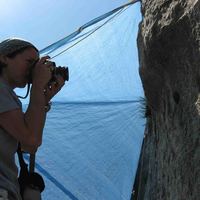
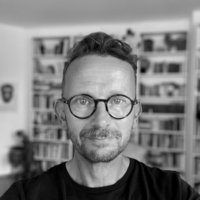

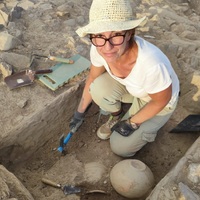

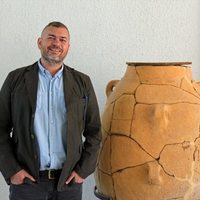
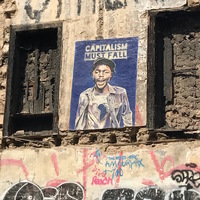
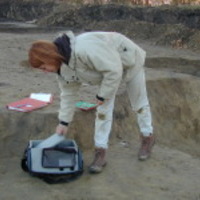

Uploads
Books by Ourania Kouka
Proposals of volumes can be sent to the editors:
ouraniak@ucy.ac.cy
marclebeau@skynet.be
Main Editors
Ourania KOUKA, Associate Professor, Department of History and Archaeology and
Archaeological Research Unit, University of Cyprus, Cyprus
ouraniak@ucy.ac.cy
Marc LEBEAU, Hab. Dr. European Centre for Upper Mesopotamian Studies (ECUMS), Belgium
Editorial Board
Ioannis AKAMATIS, Prof. Emeritus, University of Thessaloniki, Greece
Milena GOŠIĆ, Assistant Professor, Department of Archaeology, University of Belgrade, Serbia
Ivana ŽIVALJEVIĆ, Dr., Senior Researcher, Faculty of Philosophy, University of Novi Sad, Serbia
Zorica KUZMANOVIĆ, Assistant Professor, Department of Archaeology, University of Belgrade, Serbia
Sergios MENELAOU, Department of History and Archaeology, University of Cyprus, Cyprus; Fitch Laboratory, British School at Athens, Greece
Maria MINA, Assistant Professor, Department of Mediterranean Studies, University of the Aegean, Greece
Dushanka-Christina OUREM-KOTSOU, Associate Professor, Department of History and Ethnology, Demokriteian University of Thrace, Greece
John PAPADOPOULOS, Professor, Department of Classics, University of California at Los Angeles (UCLA), USA
Lefteris PLATON, Associate Professor, National and Kapodistrian University of Athens, Greece
Vasıf ŞAHOĞLU, Professor, Department of Archaeology, Program for Protohistory and Near Eastern Archaeology, Ankara University; Director of Ankara University Mustafa V. Koç Research Center for Maritime Archaeology (ANKÜSAM), Turkey
Ifigeneia ΤOURNAVITOU, Professor, Department of History, Archaeology and Social Anthropology, University of Thessaly, Greece
Sevi TRIANTAFYLLOU, Associate Professor, Department of History and Archaeology, Aristotle University of Thessaloniki, Greece
Andreas VLACHOPOULOS, Associate Professor, Department of History and Archaeology, University of Ioannina, Greece
http://www.archaeopress.com/ArchaeopressShop/Public/displayProductDetail.asp?id={5E65C7C9-F804-40ED-B375-9787D4136EDC}
Papers by Ourania Kouka
impressive harbour site in Western Anatolia that was continuously inhabited from the Neolithic to the end of
the Bronze Age. In the successive architectural phases, changing patterns in settlement planning, communal
buildings, house forms, the distribution of industrial activities, and local and imported prestige objects were
observed from the Chalcolithic (Ch) to the Early Bronze Age (EBA), and particularly from the EBA I to the
EBA II, when the settlement was transformed to a local urban center in the Izmir Region and encompassed a
strongly fortified peninsula and an also fortified part that was extending in the fruitful plain of Urla. This paper
will debate specific categories of material culture from the EBA I – II (early) settlement phases (VI.1d–1a and
V.3b–3a; ca. 3000–2750 BC), and the symbolic value in their specific contexts. The debate will be based on
a preliminary settlement and household analysis, and aims to detect symbols that may have acted on personal
and/or communal level, and conveyed social, economic and political realities in the early 3rd mill. BC.
Proposals of volumes can be sent to the editors:
ouraniak@ucy.ac.cy
marclebeau@skynet.be
Main Editors
Ourania KOUKA, Associate Professor, Department of History and Archaeology and
Archaeological Research Unit, University of Cyprus, Cyprus
ouraniak@ucy.ac.cy
Marc LEBEAU, Hab. Dr. European Centre for Upper Mesopotamian Studies (ECUMS), Belgium
Editorial Board
Ioannis AKAMATIS, Prof. Emeritus, University of Thessaloniki, Greece
Milena GOŠIĆ, Assistant Professor, Department of Archaeology, University of Belgrade, Serbia
Ivana ŽIVALJEVIĆ, Dr., Senior Researcher, Faculty of Philosophy, University of Novi Sad, Serbia
Zorica KUZMANOVIĆ, Assistant Professor, Department of Archaeology, University of Belgrade, Serbia
Sergios MENELAOU, Department of History and Archaeology, University of Cyprus, Cyprus; Fitch Laboratory, British School at Athens, Greece
Maria MINA, Assistant Professor, Department of Mediterranean Studies, University of the Aegean, Greece
Dushanka-Christina OUREM-KOTSOU, Associate Professor, Department of History and Ethnology, Demokriteian University of Thrace, Greece
John PAPADOPOULOS, Professor, Department of Classics, University of California at Los Angeles (UCLA), USA
Lefteris PLATON, Associate Professor, National and Kapodistrian University of Athens, Greece
Vasıf ŞAHOĞLU, Professor, Department of Archaeology, Program for Protohistory and Near Eastern Archaeology, Ankara University; Director of Ankara University Mustafa V. Koç Research Center for Maritime Archaeology (ANKÜSAM), Turkey
Ifigeneia ΤOURNAVITOU, Professor, Department of History, Archaeology and Social Anthropology, University of Thessaly, Greece
Sevi TRIANTAFYLLOU, Associate Professor, Department of History and Archaeology, Aristotle University of Thessaloniki, Greece
Andreas VLACHOPOULOS, Associate Professor, Department of History and Archaeology, University of Ioannina, Greece
http://www.archaeopress.com/ArchaeopressShop/Public/displayProductDetail.asp?id={5E65C7C9-F804-40ED-B375-9787D4136EDC}
impressive harbour site in Western Anatolia that was continuously inhabited from the Neolithic to the end of
the Bronze Age. In the successive architectural phases, changing patterns in settlement planning, communal
buildings, house forms, the distribution of industrial activities, and local and imported prestige objects were
observed from the Chalcolithic (Ch) to the Early Bronze Age (EBA), and particularly from the EBA I to the
EBA II, when the settlement was transformed to a local urban center in the Izmir Region and encompassed a
strongly fortified peninsula and an also fortified part that was extending in the fruitful plain of Urla. This paper
will debate specific categories of material culture from the EBA I – II (early) settlement phases (VI.1d–1a and
V.3b–3a; ca. 3000–2750 BC), and the symbolic value in their specific contexts. The debate will be based on
a preliminary settlement and household analysis, and aims to detect symbols that may have acted on personal
and/or communal level, and conveyed social, economic and political realities in the early 3rd mill. BC.
from Heraion on Samos, discusses the diachronic development of cooking ware ceramics from the mid 5th
through to the early 2nd millennia BC. The preliminary results of this integrated programme of analysis,
employing ceramic petrography as its main technique, are based on fabric and clay composition, in association
with typological information, morpho–stylistic observations, SEM analysis, as well as with regard to the local
geological background of the island. By examining diachronic choices made in the production of cooking pots,
being usually characterised in archaeological scholarship as static and resistant to change, this paper has firmly
established the identification of a long–lived ceramic production centre in the East Aegean. Continuity and
change of technological practice, and craft organisation are also discussed at the micro–scale level, while
contributing to the identification of cooking pot movement in the prehistoric Aegean.
Presentation for the first time of the EB fine stratigraphy of Miletus.